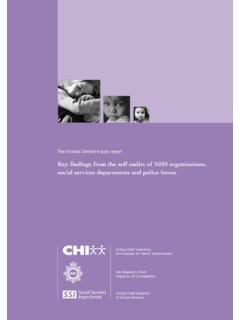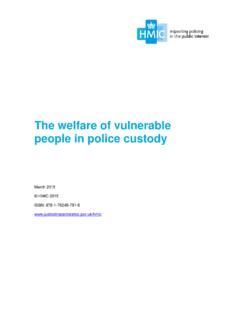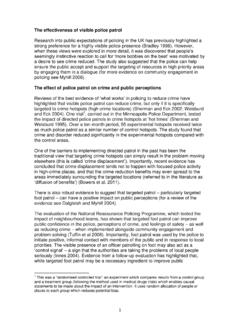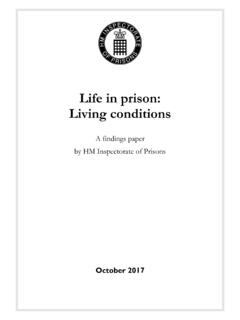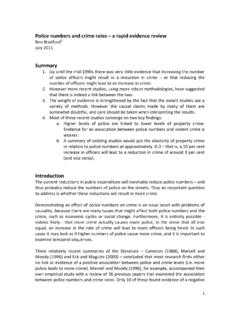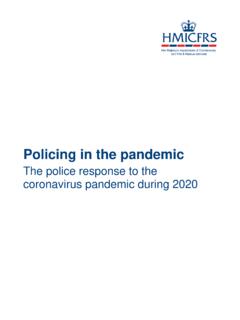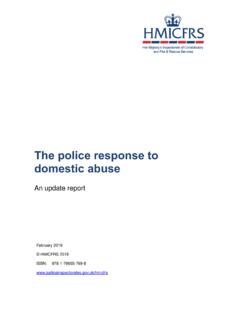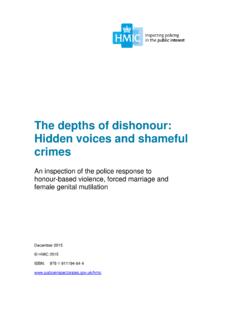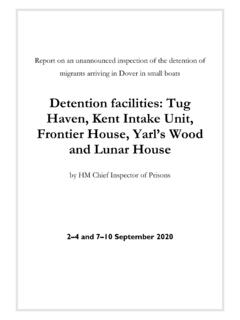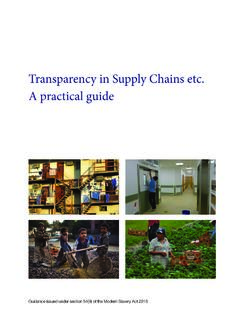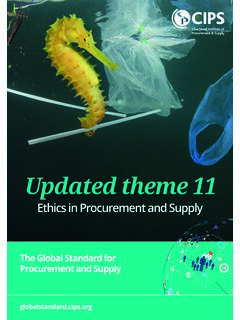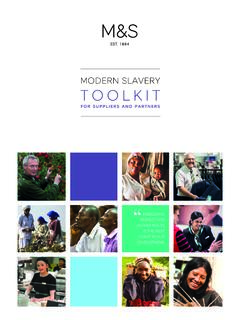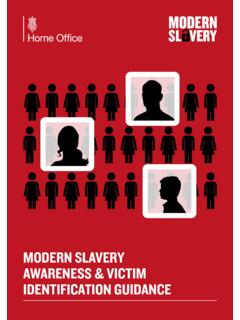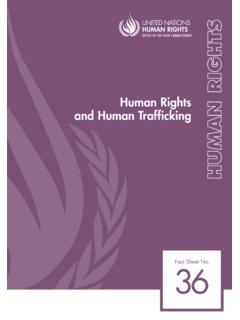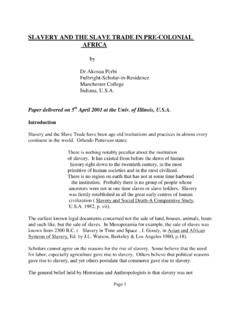Transcription of Stolen freedom: the policing response to modern slavery ...
1 Stolen freedom: the policing response to modern slavery and human trafficking October 2017 HMICFRS 2017 ISBN: 978-1-78655-579-3 2 Contents Foreword .. 5 Summary .. 7 1. Introduction .. 15 About modern slavery and human trafficking .. 15 Our inspection methodology .. 17 2. Context: Recent developments in the national response to modern slavery and human trafficking .. 19 National Referral Mechanism (NRM) .. 19 modern slavery Strategy .. 20 modern slavery Act 2015 .. 21 Haughey Review of the modern slavery Act .. 23 Police Transformation Programme.
2 24 National priority threat .. 25 Work and Pensions Committee report on victims of modern slavery .. 25 Summary .. 26 3. Findings: Leadership .. 27 National police leadership .. 27 NCA 28 Regional leadership .. 30 Force leadership .. 31 Police and crime commissioners .. 33 4. Findings: Intelligence .. 34 National intelligence picture .. 34 Use of intelligence from the NRM .. 35 Regional intelligence picture .. 36 3 Local intelligence picture .. 36 Co-ordination between the NCA, ROCUs and forces .. 39 Partnership working .. 39 5. Findings: Victim identification and initial response .
3 41 Contact officers .. 41 NRM referrals .. 46 Duty to Notify submissions .. 50 6. Findings: Crime recording .. 53 Findings from the crime data integrity inspection .. 54 Findings from this inspection .. 56 7. Findings: Investigations .. 60 NCA investigations .. 60 ROCUs .. 61 Force investigations .. 61 Working across boundaries .. 68 8. Findings: Victim care .. 70 NCA and ROCUs .. 70 Victim care plans .. 71 Accommodation for victims .. 72 Work with victim support charities .. 72 Maintaining contact when victims relocate .. 73 9. Findings: Prevention and disruption.
4 75 NCA and ROCUs .. 75 Forces .. 75 Use of preventative powers .. 78 10. Training .. 79 National training and guidance .. 79 4 NCA and ROCUs .. 80 Forces .. 80 11. Conclusion .. 82 Recommendations .. 85 Definitions and interpretation .. 88 Annex A HMICFRS modern slavery and human trafficking expert reference group .. 102 Annex B Fieldwork methodology .. 104 5 Foreword In the UK, today and every day, thousands of men, women and children who are victims of modern slavery and human trafficking are being degraded and dehumanised.
5 These crimes are multi-faceted. Cases may involve single or multiple offenders or victims, and may be national or international, organised or opportunistic. They occur in both rural and metropolitan areas, in settings ranging from nail bars to construction sites, and involve activities from domestic servitude to the trafficking of children for sexual exploitation. It is imperative that police forces are aware of the signs and indicators of these most pernicious and frequently hidden of crimes so that they can respond in an appropriate manner.
6 In this inspection we examined how the police in England and Wales are tackling modern slavery and human trafficking crimes, including their use of the powers and provisions set out in the modern slavery Act 2015. We interviewed national leads from different agencies, examined a wide range of documentation and data, and assessed operational practice in police forces, regional organised crime units (ROCUs) and within the National Crime Agency (NCA). We are grateful to all those who have contributed to the inspection and informed our work.
7 In particular, we would like to thank the Independent Anti- slavery Commissioner (Kevin Hyland OBE) and the National Police Chiefs' Council lead (Chief Constable Shaun Sawyer), together with their respective offices, for sharing much useful information and analysis; the Home Office's modern slavery Unit; and barrister Caroline Haughey for her valuable insights and support throughout the inspection. We found clear evidence of a growing impetus at national and regional levels to improve the law enforcement response to modern slavery and human trafficking.
8 Some forces Greater Manchester Police in particular are leading the way in this, and show how commitment and dedication to dealing with this type of crime can produce effective results. Overall, however, the inspection found that the identification of victims is inconsistent, sometimes ineffective, and in need of urgent and significant improvement. Victims who come into contact with the police are not always recognised as such and therefore remain in the hands of those who are exploiting them. Others are arrested as offenders or illegal immigrants.
9 While law enforcement has a duty to refer individuals to immigration and enforcement, the vulnerability of victims must be considered in parallel. Our review of current and recent cases of modern slavery and human trafficking in our ten fieldwork forces also raises serious concerns about the quality of investigations. We found that investigations are being closed prematurely, with lines 6 of enquiry still open. In some cases, victims and witnesses were not even spoken to by the police. As a result of these failings, victims are left unprotected while offenders are not brought to justice, leaving them free to continue to exploit people as commodities.
10 Too much police work in this area is reactive, showing little understanding of the nature and scale of modern slavery and human trafficking. It was disappointing to find that some frontline officers did not consider modern slavery to be an issue in their force area. We were also concerned to encounter some neighbourhood officers who said that they avoided raising the issue of modern slavery and human trafficking with local communities because they did not believe the public were either interested in or sympathetic to victims of these crimes.
